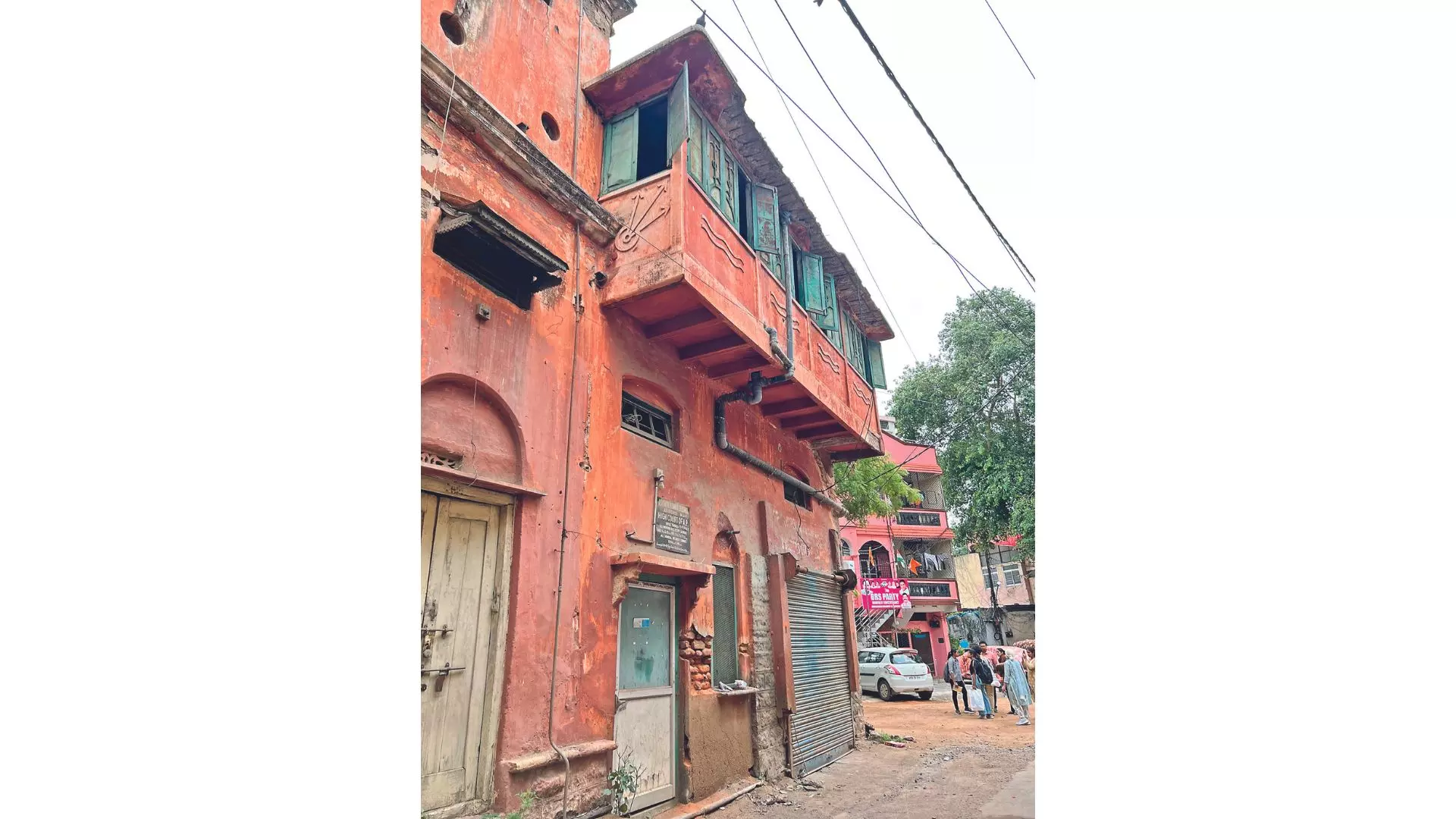Nampally, reliving the pride

It is 8 am on an overcast Saturday morning when a knot of people are waiting outside Subhan Bakery in Nampally. Clad in running shoes and comfortable clothing, the crowd, a mix of the old and the young, is assembled for the Jane Jacobs walk, that promised to delve into the extra-ordinary neighborhood of Nampally.
Organised by Studio Maqam, the walk explored the precincts of the neighborhood over a two-hour walk spanning nearly two kilometers. Taking in the crowded streets, the quieter lanes, and the hidden homes of this bustling locality, the walk revealed the hidden charms of an area that is otherwise known for its dargah, the railway station, and, of course, the crisp Osmania biscuits from Subhan!
Arshiya Syed, founder of Studio Maqam, who led the walk, states, “The first point of reference when anyone says Nampally is that it is a chaotic area. Walking will enable people to slow down and understand it’s untold stories. This was an area that was modern even 100 years ago, and there is a lot we can learn from it.”
THE PAST, PRESENT AND THE FUTURE
Jane Jacob’s Walk is a neighborhood walking tour that takes place across the world in honor of the urban activist and writer. While traditionally held in May to coincide with the month of her birthday, some take place in succeeding months.
The Nampally Walk (which was free of charge) was a true tribute to Jane Jacob as it aimed and succeeded in creating space for civic dialogue, neighborhood pride, and bringing to the fore stories by people often relegated to the margins. With maps and vintage photographs, the walk traced the journey of the locality over time.
This walk invited people to observe and experience one of the city’s older neighborhoods, which is losing its fight against road expansion and densification in the city. Following the archetype of a peripheral block housing around a centrally located marketplace, it holds valuable lessons in urban design and planning.
Structured around a three-tiered module — visiting the market and commercial areas, understanding the planning of the neighborhood and homes built by the City Improvement Board (CIB) from the mid-1910s to the 1930s — the walk gave a keen glimpse into how localities were planned around communities.
Planned so that there is a natural flow of water, which prevents flooding in monsoons, with easy access to hospitals and schools, ensuring easy movement, and having enough open spaces, including gardens where people can converge and engage, Nampally was a perfectly planned neighborhood. Over time, unhindered construction and a complete lack of civic understanding have robbed the area of its charm and reduced it to a congested and unremarkable urban sprawl.
STORIES FROM A DIFFERENT TIME
The definite highlight of the walk was seeing the few homes that were built by the City Improvement Board and are still standing. Built with 12-inch lime plastered walls that make air conditioners redundant even in Hyderabad’s stifling heat, jack-arch roofs, and gracious lines, modern architects can surely learn a lesson or two from these grand old homes.
Another treat was to see the last remaining art deco homes in the area with their decorative panels and stylized decorative elements. The walk took people inside these lovely homes, giving a peek into their stately grandeur, high ceilings with chandeliers, and grandfather clocks!
Why are walks like these important? Because they help people reconnect with their city. To learn from the past and to engage holistically with the future. Also, for those living in concrete towers, they give opportunities to soak up the bird song and see green canopies that are beautiful and breathtaking. And to find the beauty tucked away in the city’s hidden niches.
Walking helps us understand urban history and create awareness. These communities were democratic in nature, where there were planned water and sewage lines, bachelors had their own quarters, and every strata of society could co-exist. City planning needs to be accessible, affordable and equitable and this is a glimpse as to how we made it possible in the past.” — Arshiya Syed, Founder, Studio Maqam
Buildings and communities are not built in isolation. The way people engage with these spaces makes a city. Walks like these reacquaint a city and its people, and this knowledge is not found in books.” — Renu Singal, faculty at SVCA College

